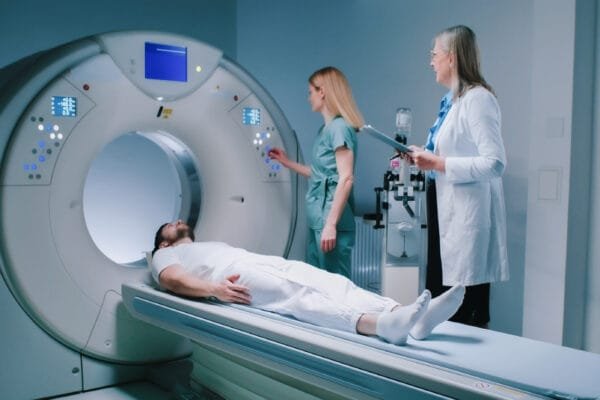Study Reveals Differences in Prostate Cancer Detection Among GP Practices

Prostate Cancer Detection A study conducted by the University of Exeter and published in the British Journal of General Practice revealed notable disparities in prostate cancer detection across GP practices in England. The study examined PSA testing in asymptomatic men and found that this method accounts for one in five prostate cancer diagnoses. Nonetheless the testing rates among GP practices varied by a factor of 13 and this difference could not be readily explained.
Socioeconomic differences were also underscored by the study which was financed by Cancer Research UK. Men from underprivileged areas had a lower likelihood of undergoing PSA testing and were more prone to being diagnosed at a later stage which diminished their chances of early treatment and improved outcomes.
Table of Contents
Why Prostate Cancer Detection Matters?
Prostate Cancer Detection Prostate cancer survival rates and treatment success improve with early detection. Cancer can be detected before symptoms occur through regular screenings such as the PSA test which lowers the likelihood of a late-stage diagnosis. Detection is now more accurate and less invasive thanks to new methods like at home saliva tests. Life saving outcomes can result from making screening more accessible and raising awareness of it.
Key Findings of the Study
Variation in GP Practices: A study by the University of Exeter found a 13-fold difference in PSA testing rates among GP practices in England indicating inconsistencies in prostate cancer screening.
Proportion of Asymptomatic Diagnoses: One in five prostate cancer cases were diagnosed through PSA testing in men without symptoms suggesting a lower rate of proactive screening than expected.
Socioeconomic Disparities: Men from deprived areas were less likely to receive PSA tests and more likely to be diagnosed at a later stage highlighting healthcare access inequalities.
Ethnic Disparities in Diagnosis: Research suggests that PSA testing may lead to overdiagnosis in certain ethnic groups emphasizing the need for more personalized screening approaches.
Implications for Screening Guidelines: The study underscores the need for clearer and more consistent screening guidelines to ensure equitable and effective prostate cancer detection.
Why Detection Rates Vary Across GP Practices?
Prostate Cancer Detection has become the most commonly diagnosed cancer in England with over 55,000 cases reported in 2023. Research revealed a 13-fold variation in PSA testing rates across GP practices underscoring inconsistencies in detection. Men living in deprived areas experience lower screening rates and higher instances of late stage diagnoses emphasizing the necessity for clearer guidelines and improved access to testing.
Impact of Early vs Late Detection
Identifying prostate cancer at an early stage is crucial for survival as it enables timely and effective treatment. Since many cases in the early stages are asymptomatic regular screenings are vital. On the other hand late detection raises the likelihood of cancer metastasizing to critical organs complicating treatment and diminishing survival odds.
Research indicates that men who do not participate in screenings have a 45% greater risk of dying from prostate cancer. These results underscore the importance of routine PSA testing and awareness initiatives to enhance early diagnosis and save lives.
How GP Practices Can Improve Screening
GP practices can enhance prostate cancer screening by implementing shared decision making conducting early risk assessments and providing PSA tests to high risk populations. Timely detection reduction of late stage diagnoses and improved outcomes are supported by effective communication and revised guidelines.
Recommendations for Patients and Healthcare Providers
Prostate Cancer Detection Patients are advised to talk with their doctor about prostate cancer screening particularly if they have risk factors such as age family history or ethnicity. People at high risk should think about getting screened sooner.
To enhance early detection and outcomes healthcare providers should evaluate risk factors keep abreast of guidelines and inform patients particularly those at greater risk.
Role of Technology in Enhancing Detection Rates
Prostate Cancer Detection Detection of prostate cancer is being enhanced by AI tools advanced imaging technologies and genetic testing. AI speeds up the diagnostic process while MRI and ultrasound increase precision saliva tests allow for early identification of risk. These advancements contribute to increased rates of early treatment and survival.
Steps Toward Better Prostate Cancer Care
To improve prostate cancer care it is essential to focus on early detection tailor treatments to individual needs and make lifestyle changes. Regular screenings such as PSA tests and genetic saliva tests aid in the early detection of cancer. Individual risk factors should inform personalized treatment plans which may include surgery radiation or hormone therapy.
Maintaining a healthy diet exercising regularly and managing stress all contribute to prostate health. Patient education and support groups are vital for managing treatment and recovery. Patients can enhance their quality of life and improve outcomes by combining these steps.

Conclusion
Prostate Cancer Detection Successful management of prostate cancer depends on its early detection the use of sophisticated screening methods and tailored treatment strategies. Detection rates and patient outcomes improve due to AI-driven diagnostics genetic testing and lifestyle changes. Patient education the advocacy of routine examinations and the use of cutting-edge technology can lead to a decrease in late stage diagnoses and an increase in survival rates. Individuals can enhance their quality of life and guarantee timely intervention for improved management of prostate cancer by embracing proactive healthcare strategies.






